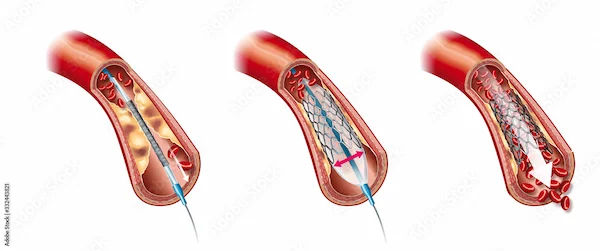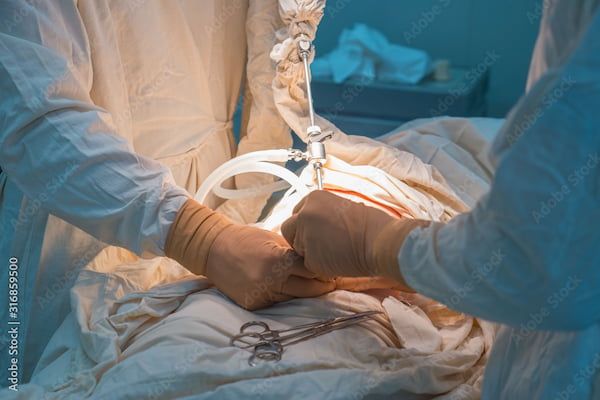Can You Have Angioplasty Without A Stent
Can angioplasty be done without a stent? Learn when stent-free angioplasty may be considered, its advantages, limitations, and recovery tips.

Written by Dr.Sonia Bhatt
Last updated on 3rd Jul, 2025

Introduction
If you or a loved one has been diagnosed with blocked or narrowed arteries, your doctor may have recommended angioplasty. But you might wonder—can angioplasty be done without a stent? The short answer is yes, but let’s explore what that means and when it might be an option.
Understanding Angioplasty
Angioplasty is a minimally invasive procedure used to open blocked or narrowed arteries, usually in the heart (coronary arteries). It helps restore blood flow and reduces symptoms like chest pain (angina) or prevents a heart attack.
Here’s how angioplasty works:
1. A thin tube (catheter) is inserted into an artery, often through the wrist or groin.
2. A small balloon at the tip of the catheter is inflated at the blockage site to widen the artery.
3. A stent (a tiny mesh tube) is often placed to keep the artery open.
But sometimes, the balloon alone may be enough—without needing a stent.
Consult Top Specialists for Personalised Heart Health Advice
When Can Angioplasty Be Done Without a Stent?
While stents are commonly used, there are situations where balloon angioplasty alone (without a stent) may be considered:
1. Small or Less Severe Blockages
If the blockage is minor, the balloon may sufficiently open the artery without needing a stent.
2. Certain Types of Blockages
Some blockages (like soft plaque) respond well to balloon dilation alone.
3. Risk of Stent Complications
In rare cases, patients may have allergies to stent materials or a high risk of blood clots, making stent-free angioplasty a safer choice.
4. Pediatric or Special Cases
In children with congenital heart conditions, balloon angioplasty may be preferred.
Pros and Cons of Angioplasty Without a Stent
Like all treatments, stent-free angioplasty comes with potential advantages and limitations.
Advantages
Choosing not to use a stent may offer the following benefits:
No foreign object left in the body (unlike a stent).
Lower risk of long-term complications, such as stent-related blood clots.
May be suitable for certain patients who cannot take blood thinners typically prescribed after stent placement.
Disadvantages
However, this approach might also have its limitations:
Higher chance of artery narrowing again (restenosis) compared to stents.
Not suitable for all blockages—complex or heavily calcified arteries usually need stents.
What Happens After Stent-Free Angioplasty?
If you have angioplasty without a stent, your doctor will closely monitor you for:
Recurrence of symptoms (chest pain, shortness of breath).
Need for repeat procedures if the artery narrows again.
Lifestyle Changes to Prevent Future Blockages
Adopting the following lifestyle habits may help improve and maintain your heart health over time:
Following a balanced diet that is low in saturated fats and high in fruits, vegetables, and whole grains.
Engaging in moderate physical activity for at least 30 minutes on most days of the week.
Quitting smoking to potentially lower the risk of cardiovascular disease.
Managing stress through relaxation techniques such as meditation, deep breathing, or yoga.
Taking prescribed medications, such as blood thinners or statins, exactly as directed by your doctor.
When Is a Stent Necessary?
In most cases, stents are recommended because:
They keep the artery open longer than balloon angioplasty alone.
They reduce the risk of the artery closing again.
They are highly effective for severe blockages.
Your cardiologist will decide based on your specific condition, artery size, and blockage severity.
Should You Consider Stent-Free Angioplasty?
If you’re wondering whether stent-free angioplasty is right for you, consult a cardiologist. They will evaluate:
Your heart health and medical history.
The location and severity of the blockage.
Your ability to take medications (like blood thinners).
If you have concerns about blocked arteries or angioplasty, Apollo 24|7 offers expert cardiology consultations and diagnostic tests. You can easily book an appointment online and get personalised advice.
Final Thoughts
While angioplasty can sometimes be done without a stent, it depends on your specific condition. Stents are more common because they provide long-term support, but in certain cases, balloon angioplasty alone may be an option.
Work closely with your doctor, follow a heart-healthy lifestyle, and stay informed about your treatment choices.
Consult Top Cardiologists
Consult Top Specialists for Personalised Heart Health Advice

Dr. Sumanta Chatterjee
Cardiologist
12 Years • MBBS,MD General Medicine,DM Cardiology
Kolkata
HealthYou Speciality Clinic & Diagnostics., Kolkata
(25+ Patients)
Dr. Praveen Kumar
Cardiologist
25 Years • MBBS, MD (Medicine), DM (Cardiology)
Ghaziabad
Navaanya wellness, Ghaziabad

Dr. Mangesh Danej
Cardiologist
8 Years • MBBS, MD (General Medicine), DNB (Cardiology)
Pune
Dr Danej clinic, Pune
(375+ Patients)
Dr. Dixit Garg
Cardiologist
10 Years • MBBS , DNB (General medicine) , DNB (cardiology)
Gurugram
Smiles & Hearts, Gurugram

Dr. Nataraja Setty
Cardiologist
21 Years • MBBS, MD (General Medicine), DM (Cardiology)
Bengaluru
Sapphire heart care clinic, Bengaluru
Consult Top Cardiologists

Dr. Sumanta Chatterjee
Cardiologist
12 Years • MBBS,MD General Medicine,DM Cardiology
Kolkata
HealthYou Speciality Clinic & Diagnostics., Kolkata
(25+ Patients)
Dr. Praveen Kumar
Cardiologist
25 Years • MBBS, MD (Medicine), DM (Cardiology)
Ghaziabad
Navaanya wellness, Ghaziabad

Dr. Mangesh Danej
Cardiologist
8 Years • MBBS, MD (General Medicine), DNB (Cardiology)
Pune
Dr Danej clinic, Pune
(375+ Patients)
Dr. Dixit Garg
Cardiologist
10 Years • MBBS , DNB (General medicine) , DNB (cardiology)
Gurugram
Smiles & Hearts, Gurugram

Dr. Nataraja Setty
Cardiologist
21 Years • MBBS, MD (General Medicine), DM (Cardiology)
Bengaluru
Sapphire heart care clinic, Bengaluru




